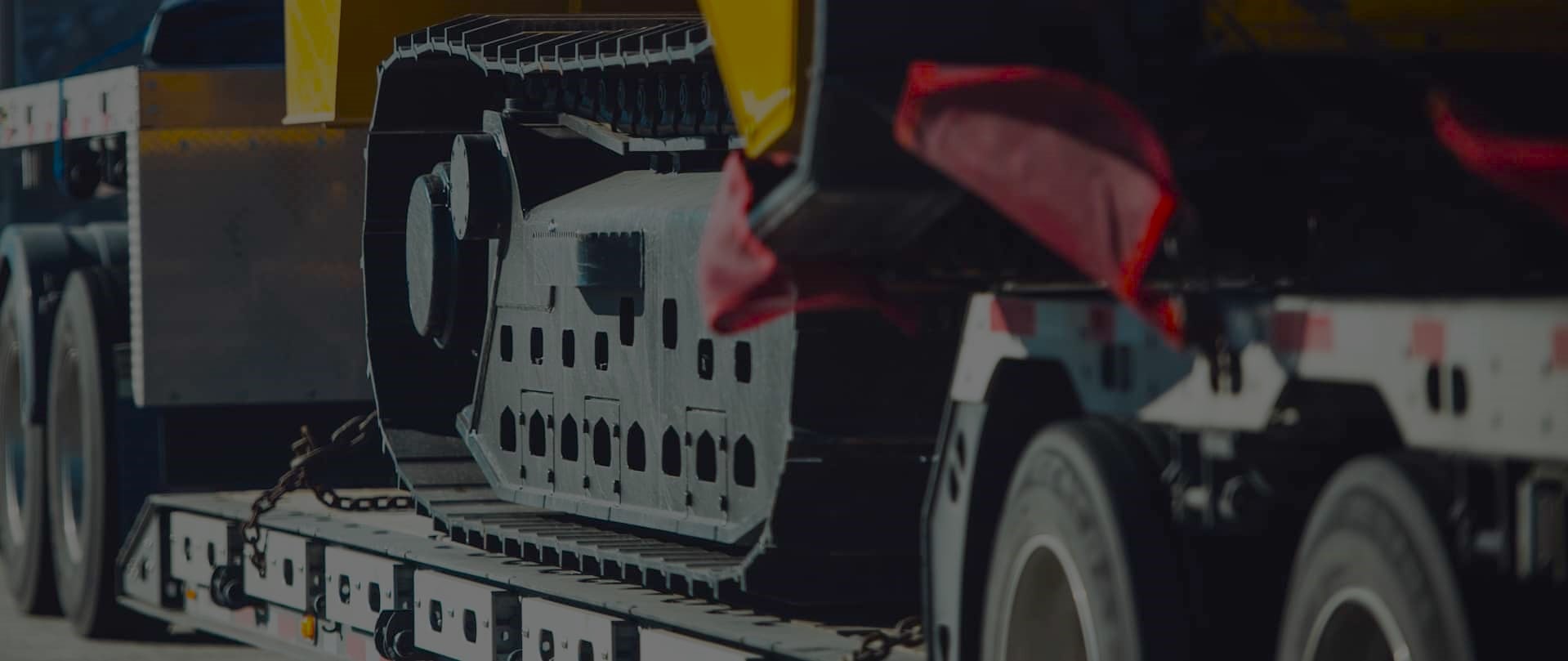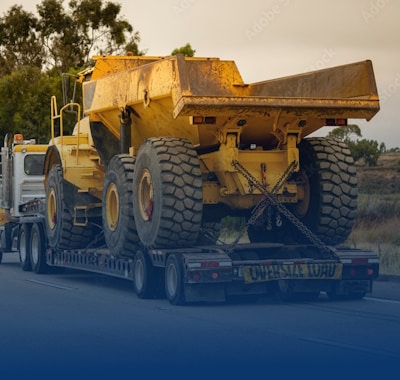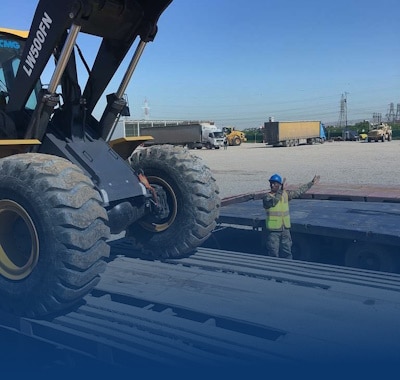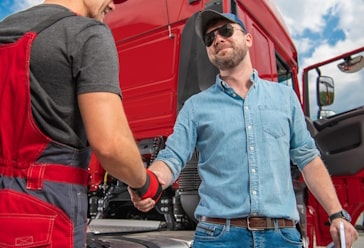Relocating Heavy Machinery: Best Practices for Long Distance Moves
Freedom Heavy Haul can offer expedited Pickup and Delivery for any size shipment anywhere in the USA. Contact us today for No Hassle, No Pressure Pricing.
Moving large equipment is a complex task that requires careful planning and expertise. Whether you’re transporting cranes, bulldozers, or other industrial tools, every step must be executed with precision. This guide outlines the essential steps to ensure a smooth and safe process.
First, detailed planning is crucial. Create an inventory that lists the size, weight, and condition of each machine. This helps avoid delays and ensures compliance with regulations. Proper permits and route planning are also key to a successful move.
Safety is another top priority. Using specialized trailers and lifting tools minimizes the risk of damage or accidents. Our team follows strict safety protocols to protect your equipment and ensure it arrives at its destination intact.
Effective communication and coordination are vital throughout the process. From loading to transit, our experts handle every detail with care. We prioritize transparency and keep you informed at every stage.
For more insights into the process, check out our detailed guide on heavy equipment hauling. Let us help you navigate this challenging task with confidence and ease.
Understanding Heavy Machinery Relocation Challenges
Relocating industrial equipment presents unique challenges that demand careful attention. From assessing the scale of the move to navigating logistical hurdles, every step requires precision and expertise. Understanding these challenges is the foundation for a successful transport process.
Assessing the Scale and Inventory of Equipment
Before any move, it’s essential to evaluate the size, weight, and condition of each piece of equipment. A detailed inventory ensures that nothing is overlooked and helps in planning the right resources. This step minimizes delays and ensures compliance with regulations.
Identifying Unique Logistical Concerns
Transporting heavy machinery often involves navigating route obstacles, clearance issues, and specialized handling requirements. These logistical concerns can significantly impact the process. Addressing them early ensures a smoother transition and reduces the risk of damage.
| Logistical Challenge | Key Considerations |
|---|---|
| Route Planning | Clearance heights, road restrictions, and permits |
| Equipment Weight | Specialized trailers and lifting tools |
| Safety Measures | Protecting machinery during loading and transit |
At our company, we prioritize safety and efficiency in every move. Our team’s expertise ensures that your equipment arrives at its destination intact. For more insights, explore our guide on heavy equipment transportation services.
Pre-Move Assessments and Detailed Planning
Successful relocation of industrial machinery starts with meticulous pre-move assessments. These evaluations ensure that every step of the process is carefully planned, minimizing risks and delays. By addressing potential challenges early, we create a seamless transport experience for your equipment.
Conducting Risk Assessments and Inspections
Thorough risk assessments are critical to identifying potential hazards. Our team conducts detailed inspections of each machine, checking for structural integrity and operational readiness. This approach helps prevent damage during loading and transit.
“A well-executed inspection is the first line of defense against unexpected issues during relocation.”
We also document every part of the equipment, ensuring compliance with regulations and safety standards. This meticulous planning reduces the risk of accidents and ensures a smooth move.
Setting Clear Objectives and Timelines
Establishing clear objectives is essential for a successful relocation. We work with your business to define the scope of the project, including size, weight, and destination requirements. This communication ensures that everyone is aligned from the start.
Creating a realistic timeline is another key step. We factor in permit acquisition, route planning, and loading schedules to avoid delays. Our expertise ensures that your machinery arrives on time and in perfect condition.
| Pre-Move Step | Key Considerations |
|---|---|
| Risk Assessment | Identify hazards, inspect machinery, ensure compliance |
| Objective Setting | Define scope, align goals, establish timelines |
| Timeline Creation | Plan permits, routes, and loading schedules |
At our company, we prioritize safety and efficiency in every move. For more insights into our process, explore our heavy machinery relocation solutions.
Best Practices for Long Distance Relocation of Heavy Machinery
Transporting industrial machinery across long distances demands precision and expertise. Every step, from securing permits to selecting the right team, plays a critical role in ensuring a smooth and safe process. By adhering to proven methods, we minimize risks and deliver exceptional results.
Ensuring Compliance with Regulations and Permits
Compliance with local and federal regulations is non-negotiable. Obtaining the necessary permits ensures that your transport process is legally sound and avoids costly delays. Our team handles all documentation, ensuring your equipment meets every regulation.
Proper planning also involves understanding route restrictions and clearance requirements. This proactive approach eliminates potential obstacles and keeps your machinery on schedule.
Selecting Expert Movers and Riggers
Choosing the right professionals is essential for a successful move. Our company employs skilled movers and riggers with specialized expertise in handling heavy equipment. They use advanced tools and techniques to ensure your machines are transported safely.
“The right team makes all the difference in protecting your equipment and ensuring a seamless relocation.”
From loading to unloading, our team follows strict safety protocols to prevent damage. This commitment to excellence ensures your machinery arrives in perfect condition.
For more information on how we handle reliable heavy machinery relocation services, explore our detailed guide. Let us help you navigate this complex process with confidence.
Transporting and Handling Equipment Safely
Ensuring the safe transport of industrial equipment requires a combination of expertise and precision. Every step, from securing the machinery to selecting the right transport methods, plays a critical role in preventing damage and ensuring a smooth process.
Securing and Packaging Machinery to Prevent Damage
Proper packaging is essential to protect equipment during transit. We use durable materials like foam padding, straps, and custom crates to secure each piece. This minimizes movement and reduces the risk of damage.
For fragile components, we apply additional protective layers. Our team ensures that every part of the machinery is handled with care, from loading to unloading.
Choosing Specialized Transport Methods and Rigging Tools
Selecting the right transport method depends on the weight and dimensions of the equipment. We use lowboy trailers for oversized items and cranes for heavy lifting. These tools ensure safe and efficient transportation.
Our rigging experts follow strict safety protocols. They use advanced techniques to secure machinery and prevent accidents during transit.
Optimizing Route Planning and Scheduling
Accurate route planning is crucial to avoid delays and hazards. We analyze potential obstacles like low bridges, narrow roads, and traffic restrictions. This ensures a smooth journey for your equipment.
We also use real-time scheduling tools to adjust plans as needed. This flexibility helps us meet deadlines and deliver your machinery on time.
| Aspect | Key Considerations |
|---|---|
| Packaging | Durable materials, custom crates, foam padding |
| Transport Methods | Lowboy trailers, cranes, specialized rigging tools |
| Route Planning | Clearance checks, traffic analysis, real-time adjustments |
At our company, we prioritize safety and efficiency in every move. For more insights into our service, explore our heavy machinery relocation solutions.
Executing the Move: Coordination and Safety Measures
The execution phase of moving heavy machinery requires seamless coordination and strict safety measures. Every step, from communication to reassembly, must be carefully managed to ensure a smooth and secure process. Our team prioritizes teamwork and precision to deliver exceptional results.
Effective Communication Among Stakeholders
Clear communication is the backbone of a successful move. We ensure constant collaboration between logistics teams, transport providers, and on-site managers. This alignment minimizes misunderstandings and keeps the process on track.
Our relocation manager oversees every aspect of the move, ensuring accountability and efficiency. This dedicated role ensures that all parties are informed and working toward the same goals.
Loading, Unloading, and Reassembly Procedures
Loading and unloading heavy equipment demands precision and expertise. We use industry-standard tools like cranes and lowboy trailers to handle machinery safely. Our team follows strict protocols to prevent damage during these critical stages.
After transport, we carefully reassemble and test each piece of equipment. This ensures that your machinery operates correctly and meets all performance standards.
| Step | Key Actions |
|---|---|
| Communication | Align logistics teams, transport providers, and on-site managers |
| Loading | Use cranes and trailers, follow safety protocols |
| Unloading | Handle machinery carefully, prevent damage |
| Reassembly | Test equipment to ensure proper functionality |
At our company, we prioritize safety and efficiency in every move. Our expertise ensures that your machinery arrives safely and operates flawlessly. For more details on our heavy equipment relocation services, explore our comprehensive guide.
Wrapping Up the Relocation Journey
Completing a transport project for industrial equipment involves more than just delivering the machinery. It’s about ensuring every step of the process is documented and reviewed for future improvements. Post-move inspections are critical to identify any damage and take corrective actions promptly.
Routine maintenance and updated documentation play a vital role in maintaining the performance of your heavy equipment. These steps ensure your machinery remains in optimal condition for years to come. Conducting a review meeting with all stakeholders helps refine our transportation methods for future projects.
At our company, we prioritize transparency and safety. A well-documented move not only supports future planning but also reinforces our commitment to quality. For a reliable and hassle-free experience, trust our expert heavy machinery relocation services.







